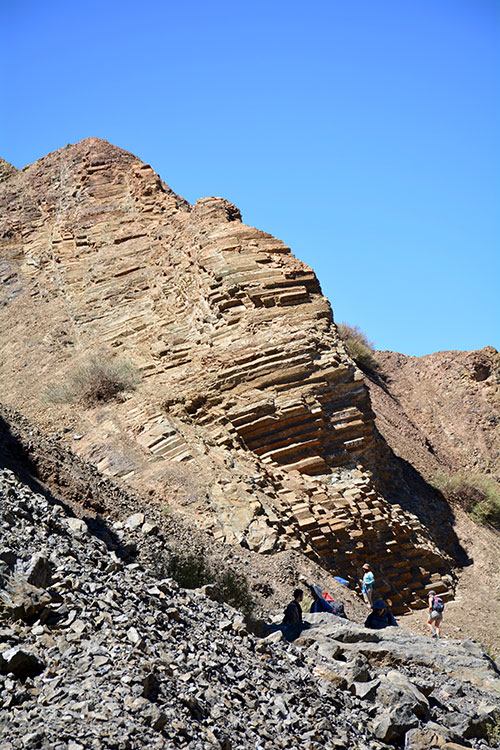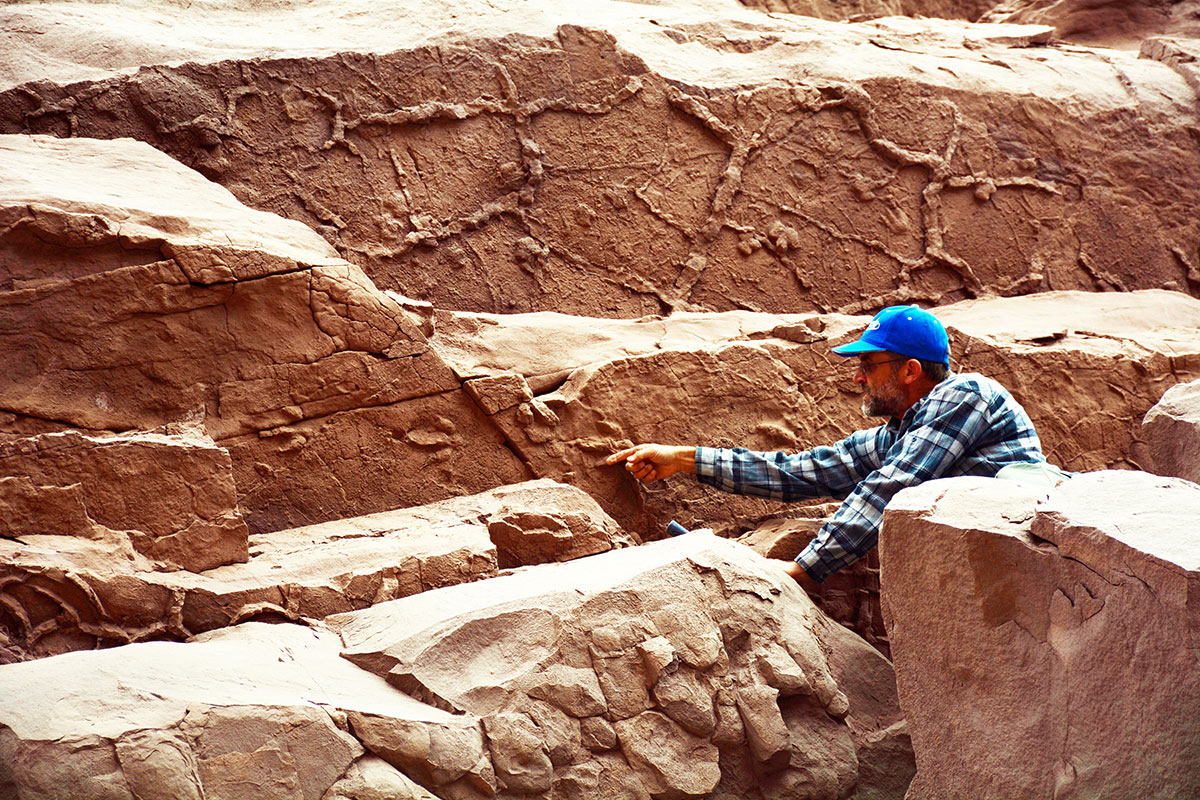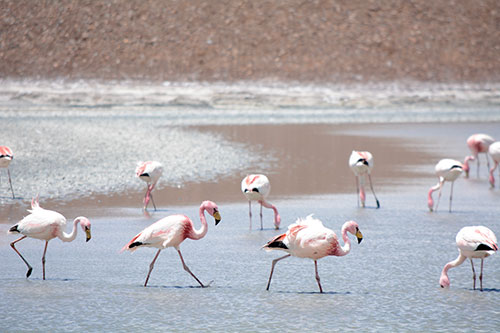PROVIDENCE, R.I. [Brown University] — New Englanders may be surprised to learn that they live on a chunk of land that was once part of the protocontinent that later formed South America. Likewise, the ground beneath present-day Argentina was once part of the North American protocontinent. Here in New England, geological evidence of this ancient tectonic land swap is hard to come by. But in Argentina, that evidence is laid bare on the surface.
A group students and professors from Brown recently traveled to Argentina to see that first hand. The trip was part of a class on global tectonics taught by geologists Alberto Saal, Greg Hirth and Don Forsyth, and supported by Brown’s Global Experiential Learning and Teaching (GELT) program. Over 15 days, the group of 14 undergrads and grad students drove more than 2,100 miles across Argentina, spanning millions of years of geological history in the process.
“I always wanted to do this with students,” said Saal, who grew up in central Argentina. “I knew how beautiful the geology is. Plus, the eastern border of North America and the western border of South America have parallel histories.”

Those parallel histories start around 550 million years ago, when a piece of the supercontinent that would later form South America and Africa broke off and drifted away to eventually collide with proto-North America. Parts of Maine, Massachusetts and all of Rhode Island are all part of that chunk. Around the same time, a piece of the North American protocontinent broke off and headed toward South America. That piece, known as Precordillera, is now embedded in central Argentina.
“You can’t see much of this history in the eastern U.S. because it’s covered by woods and forests,” Saal said. “But because Argentina is so dry, you can see it on the surface. You can stand on one mountain and see all the different pieces going from 1.2 billion years to today laid out in front of you.”
As Precordillera moved toward South America, it accumulated limestone sediments that only form in marine environments. The students got to see those sediments in central Argentina, hundreds of miles from the nearest ocean.
“One of the really cool days was in the San Juan River valley,” said Emma Gleeman, a senior who took part in the trip. “All along these cliffs—the sides of the mountains overlooking the river valley—we could see these enormous blocks of limestone.”
Other seemingly out-of-place deposits related to this tectonic migration were also on display. The students saw pieces of oceanic crust mounted on top of continental sediments—remnants of the process that brought Precordillera to Argentina 450 million or so years ago. Those deposits included formations normally only seen at the bottom of the ocean.
“We saw pillow basalts, which happen under the ocean when rifting occurs,” Gleeman said. “It’s a really cool formation you don’t get to see very often.”
All of the formations the students saw reinforced the coursework they had done all semester long. The class was structured as a seminar, in which students read, presented and discussed scientific papers describing these geological processes. But for Gleeman, it was seeing the evidence in person that drove it home.
“They’re such different experiences—being in a class and reading a paper versus actually being out in the field, seeing all these processes together, and getting to touch all the different layers of rock,” she said.
But the geology of Argentina wasn’t the only draw for Gleeman, a double concentrator in geology and Hispanic studies.
“I love Latin America, and I want to learn about everything from the history and politics to the physical landscape,” she said. “So this was an exciting opportunity.”
The students and professors traveled in a small bus that crisscrossed three Argentinian provinces. Each day’s journey was dotted by short hikes to see spots of interest.
There were a few surprises along the way. At one stop, the group found the fossilized footprints of a paleo-rhea—ancient ancestor to the giant ostrich-related birds that still live in the region.

For Camera Ford, a senior geology concentrator, the pinnacle of the trip was “altitude day,” a bus trip to a 15,000-foot peak in the Andes Mountains. Along the way, the group stopped at a salt flat, where a stand of wild flamingoes meandered across the landscape.
“It was surreal,” Ford said. “We're in a salt flat, 15,000 feet in the air, with flamingos and the backdrop of the snow-capped Andes Mountains. It was just incredible.”

The experience helped her think more about what she might do after Brown. She found herself particularly interested in the volcanic deposits the group saw along the way.
“This trip helped me think through a lot of stuff,” she said. “I realized that I have an interest in volcanology and realized how much fun I had being in the field. So I’m looking to work as someone’s research assistant … so I can go out into the field and learn more.”